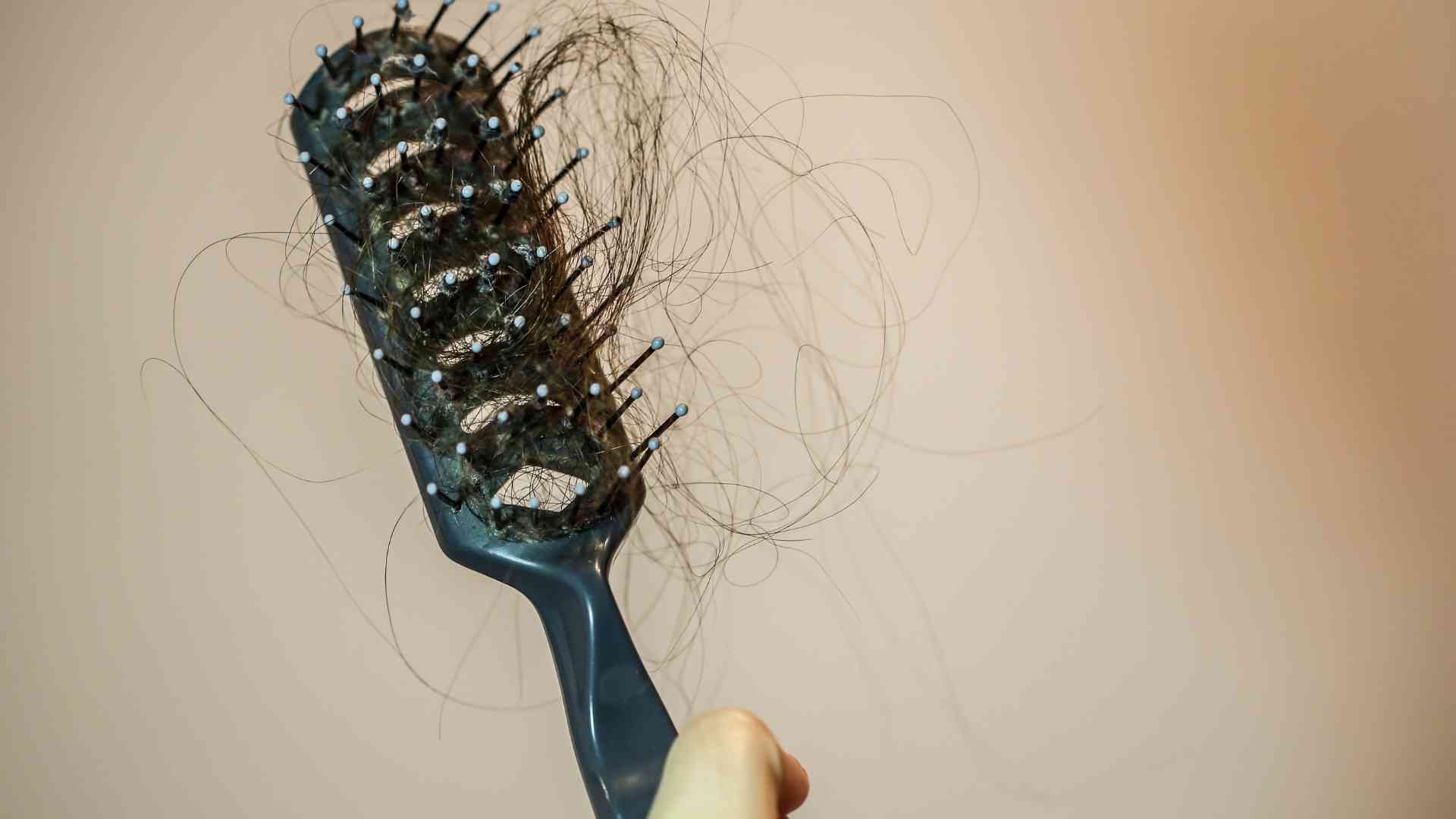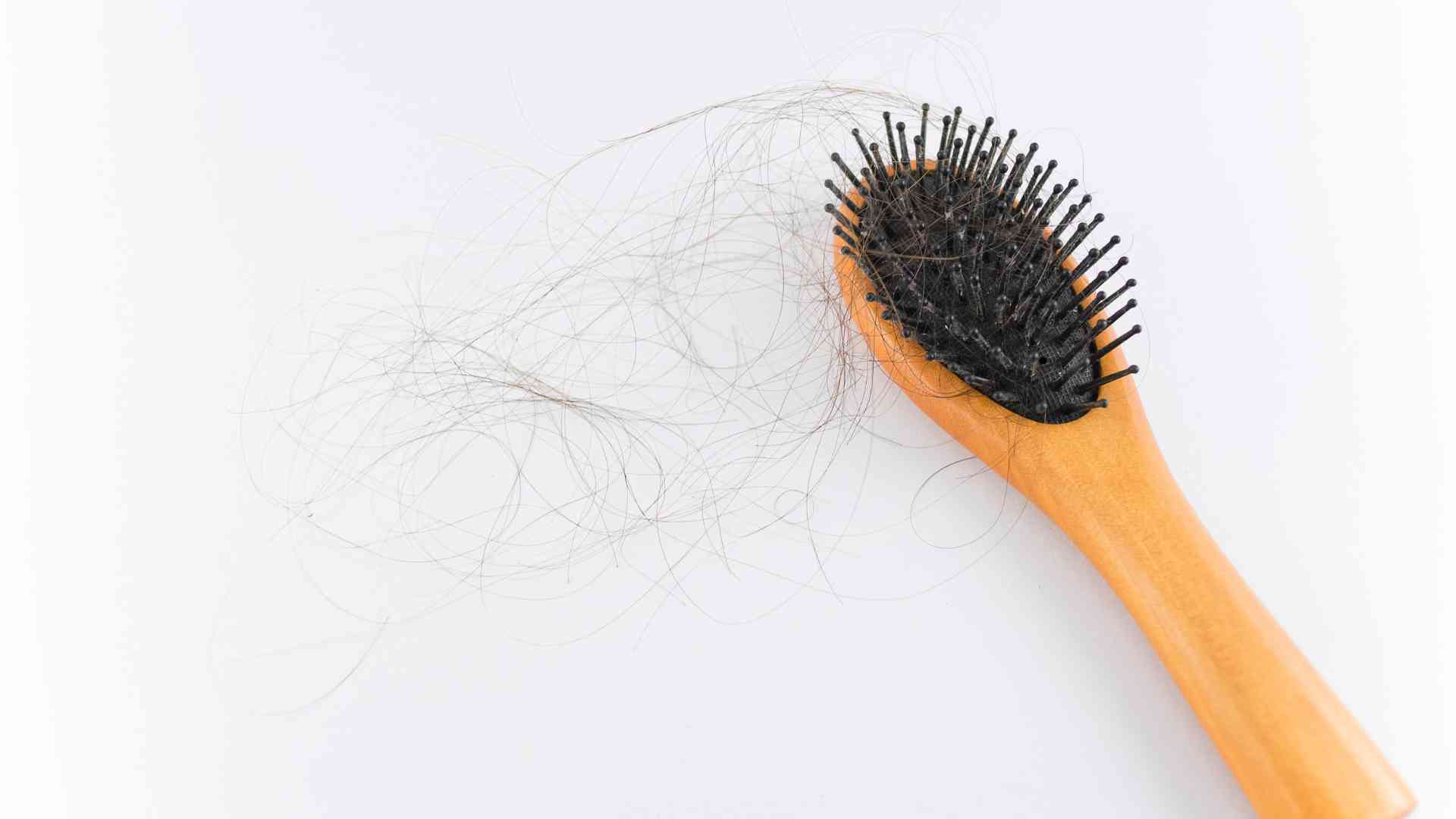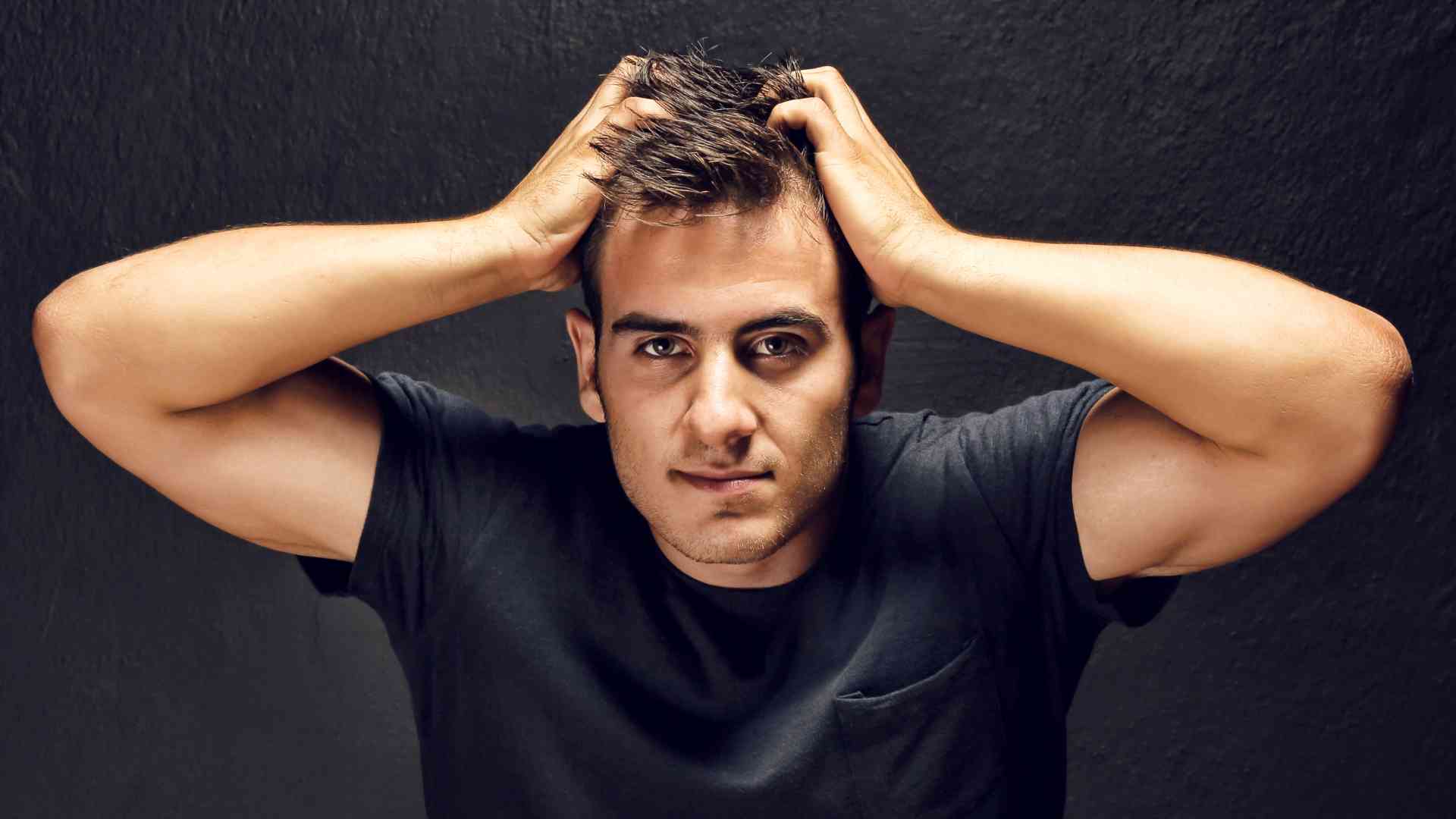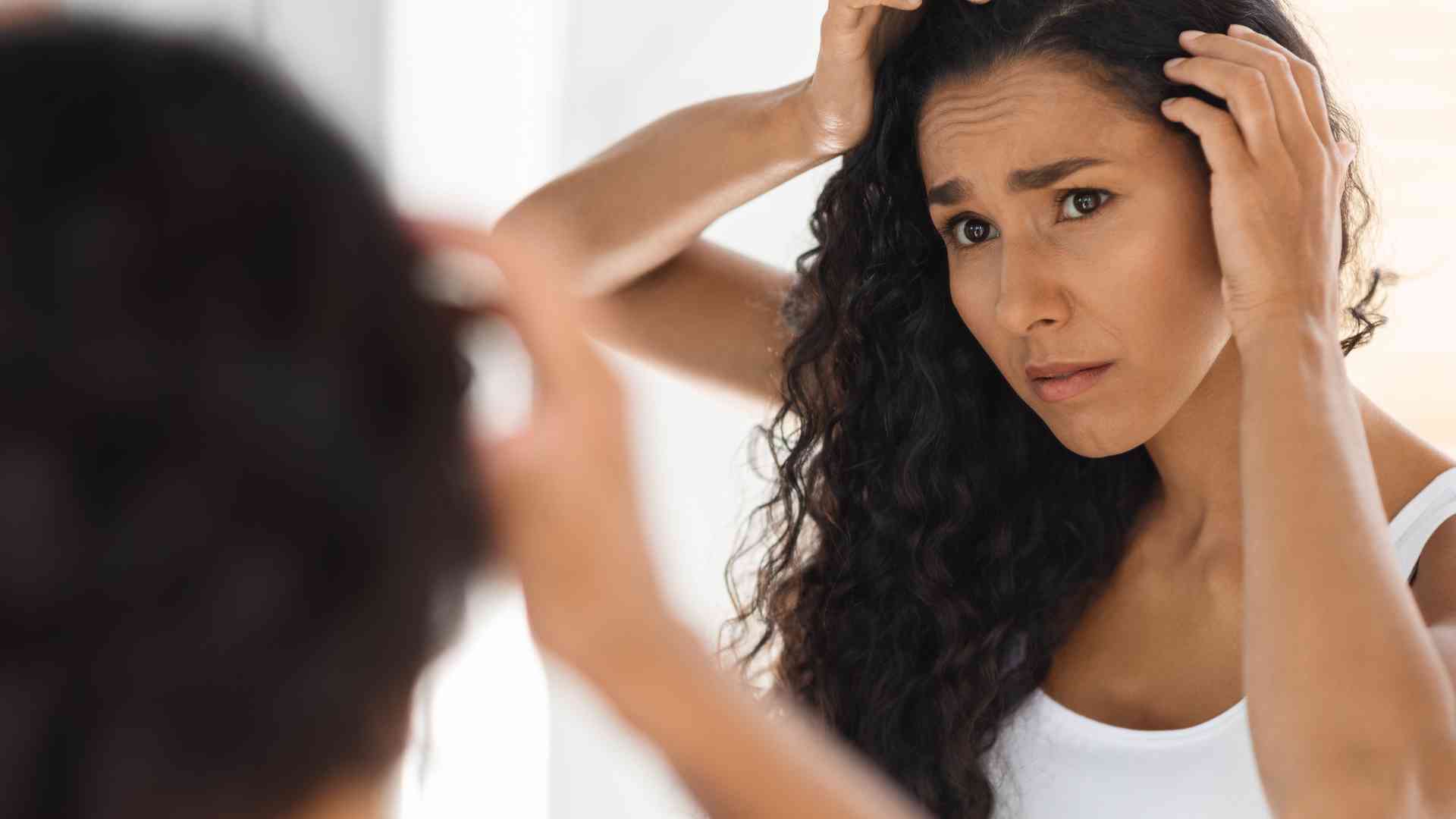In a world where hair is often a symbol of identity and confidence, the concern over hair loss resonates universally. Yet, amidst the plethora of information available, the quest for accurate insights becomes essential. With this in mind, we embark on a journey to debunk myths and unveil truths about hair loss.
Our goal is to provide a compass of factual understanding that navigates through the labyrinth of misconceptions. From the science behind hair growth to the influence of genetics and lifestyle, we’ll unravel the intricate threads that weave the tapestry of hair health. As we delve into this journey, we empower ourselves with knowledge that dispels uncertainty and guides us towards informed choices in the realm of hair care.
1. Myth: Frequent Hat-Wearing Causes Hair Loss
The misconception that wearing hats frequently can lead to hair loss has been a persistent belief for quite some time. This myth likely originated from observations that individuals who wear hats often, such as baseball players or people in professions requiring headgear, might appear to have receding hairlines or thinning hair. However, it’s essential to understand that the correlation between hat-wearing and hair loss is not indicative of causation.
Clarifying the Reality: Hats and Hair Loss
Wearing hats, when done properly and in moderation, does not cause hair loss. Hair loss is primarily influenced by genetic factors, hormonal imbalances, age, underlying medical conditions, and certain medications. Hair follicles are located beneath the scalp’s surface, and they are not significantly impacted by the presence of a hat on the head. Hats do not exert enough pressure or friction to damage hair follicles to the extent that they cause hair loss.
Exacerbation of Pre-existing Hair Conditions
While hats themselves do not directly cause hair loss, they might exacerbate pre-existing hair conditions in some cases. Here are a few scenarios to consider:
- Poor Hygiene: Wearing dirty hats for extended periods can lead to scalp irritation, dandruff, or fungal infections. These conditions could potentially contribute to hair thinning if left untreated.
- Traction Alopecia: This type of hair loss is caused by consistent and prolonged tension on the hair follicles. Tight-fitting hats or headgear could potentially contribute to this condition, especially if worn too snugly over an extended period. However, this is more a result of the tension on the hair rather than the hat itself.
- Excessive Sweating: Hats can trap sweat close to the scalp, creating a moist environment that may encourage the growth of bacteria or fungi. This can lead to scalp issues that could indirectly impact hair health if not managed properly.
In conclusion, the myth that frequent hat-wearing causes hair loss is not supported by scientific evidence. Hats themselves, when worn correctly and in moderation, do not lead to hair loss. Hair loss is a complex issue with various underlying causes, most of which are genetic or related to other health factors.
While hats might exacerbate pre-existing hair conditions under certain circumstances, they are not the root cause of hair loss. It’s crucial to base our understanding of hair loss on accurate information and scientific research rather than unfounded myths. If you are concerned about hair loss or scalp health, it’s best to consult with a medical professional or a dermatologist who specializes in hair and scalp issues.
2. Myth: Shampooing Too Often Leads to Hair Loss
The misconception that shampooing frequently causes hair loss is a widespread belief that has led to confusion among individuals seeking to maintain healthy hair. This myth is rooted in the mistaken assumption that shampooing removes natural oils from the scalp, thereby weakening the hair follicles and causing hair to fall out. However, it’s important to clarify that this belief is not supported by scientific evidence.
Importance of Keeping the Scalp Clean
Maintaining a clean scalp is essential for overall hair health. The scalp produces sebum, a natural oil that can accumulate over time and mix with dirt, sweat, and dead skin cells. If not properly cleaned, this build-up can potentially lead to clogged hair follicles, scalp irritation, and even conditions like dandruff. Regular shampooing helps to remove excess oil, debris, and pollutants from the scalp, creating a healthier environment for hair growth.
Debunking the Idea of Shampoo-Induced Hair Loss
Shampooing your hair does not lead to significant hair shedding. The act of shampooing and massaging the scalp might cause a small amount of hair to fall out, but this is a natural part of the hair growth cycle. On average, individuals shed around 50 to 100 hairs per day, regardless of whether they shampoo daily or less frequently. The hairs that fall out during shampooing are often those that are already in the shedding phase of the growth cycle.
Need for Gentle and Appropriate Hair Care Products
While frequent shampooing is not a cause of hair loss, it’s important to use gentle and appropriate hair care products. Harsh shampoos or those containing sulfates can strip the hair and scalp of natural oils, leading to dryness and potential damage. Opting for a mild, sulfate-free shampoo can help maintain a healthy balance between cleansing the scalp and preserving its natural oils.
The belief that shampooing too often causes hair loss is a misconception that lacks scientific support. Regular shampooing is a crucial part of maintaining a clean and healthy scalp, which in turn supports optimal hair growth. Hair shedding during shampooing is a normal phenomenon and is not a cause for concern. To promote hair health, it’s advisable to use gentle and appropriate hair care products that suit your hair type and needs. If you have specific concerns about your hair or scalp, consulting with a dermatologist or hair care professional can provide personalized guidance and recommendations.
3. Myth: Hair Loss Only Affects Older Individuals
The misconception that hair loss only occurs with aging is a prevalent belief that oversimplifies the complex nature of hair loss. While it’s true that many older individuals experience some degree of hair thinning or loss as a natural part of the aging process, hair loss can affect people of all ages, including younger individuals.
Common Causes of Hair Loss in Younger Individuals
- Genetics (Androgenetic Alopecia): This is one of the most common causes of hair loss in both men and women. It’s often referred to as male pattern baldness or female pattern baldness. Genetic factors play a significant role in determining whether an individual will experience this type of hair loss, and it can begin as early as the late teens or early twenties.
- Stress: Experiencing high levels of physical or emotional stress can trigger a type of hair loss called telogen effluvium. This condition leads to the premature shedding of hair follicles into the resting phase of the growth cycle, resulting in noticeable hair thinning. Stress-induced hair loss can affect people of all ages.
- Medical Conditions: Certain medical conditions, such as autoimmune disorders like alopecia areata, can cause hair loss in younger individuals. Alopecia areata is characterized by sudden and patchy hair loss, and it can start at any age, including childhood.
- Hormonal Changes: Hormonal fluctuations due to conditions like polycystic ovary syndrome (PCOS) or thyroid disorders can lead to hair thinning or loss in younger individuals.
Significance of Early Detection and Intervention
Early detection and intervention are crucial for addressing hair loss effectively, regardless of age. Taking proactive steps when you notice signs of hair thinning can help prevent further loss and improve the chances of successful treatment. The sooner you address the issue, the more treatment options you may have available.
For individuals experiencing hair loss at a young age, consulting with a dermatologist or a healthcare professional specializing in hair loss is essential. They can accurately diagnose the underlying cause of the hair loss and recommend appropriate treatments, such as topical medications, oral medications, lifestyle modifications, or even hair transplant procedures if necessary.
Hair loss is not limited to older individuals; it can affect people of all ages due to a variety of factors, including genetics, stress, medical conditions, and hormonal changes. Recognizing the signs of hair loss early and seeking professional guidance can lead to more successful outcomes in terms of preserving and regrowing hair. It’s important to dispel the misconception that hair loss is solely an issue for the elderly and to be proactive in addressing hair health concerns regardless of age.
4. Myth: Baldness is Inherited Only from the Mother’s Side

The misconception that baldness is exclusively inherited from the mother’s side of the family is a widespread belief that oversimplifies the genetic factors involved in hair loss. While it is true that genetics play a significant role in determining the likelihood of experiencing hair loss, the inheritance pattern is not limited to the maternal side alone.
Role of Genetics and Inheritance Patterns
Hair loss, particularly androgenetic alopecia (male and female pattern baldness), is influenced by a complex interplay of genes from both the maternal and paternal sides of the family. These genes can determine an individual’s predisposition to hair loss, the age at which it begins, and the pattern it follows.
Genetic Complexity
Hair loss patterns are not governed by a single gene but rather by multiple genes that interact with each other and respond to hormonal signals. Androgenetic alopecia is influenced by a combination of genetic factors, including variations in genes related to hormone receptors, hair follicle sensitivity to hormones like dihydrotestosterone (DHT), and other factors that regulate hair growth cycles.
Inheritance from Both Parents
It’s important to understand that hair loss can be inherited from both the maternal and paternal sides of the family. Genetic contributions from both parents can influence the hair loss pattern that an individual may develop. A person with a family history of hair loss on either side may be at an increased risk, but it’s not limited to the maternal line.
The belief that baldness is solely inherited from the mother’s side is a simplification that doesn’t accurately reflect the genetic complexity of hair loss. Genetics play a crucial role in determining an individual’s likelihood of experiencing hair loss, and these genetic factors are inherited from both parents. The interplay of multiple genes and their interaction with hormones leads to the development of various patterns of hair loss. If you’re concerned about your risk of hair loss, it’s important to consider the history of both sides of your family and to consult with a healthcare professional or dermatologist who specializes in hair and scalp conditions for personalized guidance and recommendations.
5. Myth: Wearing Tight Hairstyles Causes Permanent Hair Loss
The misconception that frequently wearing tight hairstyles leads to permanent hair loss is a concern that has gained attention over the years. While it is true that wearing tight hairstyles can have an impact on hair health, the idea of permanent hair loss from this practice is not entirely accurate.
Tight Hairstyles and Temporary Hair Loss (Traction Alopecia)
Tight hairstyles, such as tight ponytails, braids, cornrows, or extensions, can exert continuous tension on the hair follicles and the scalp. This persistent tension can result in a condition known as traction alopecia. Traction alopecia is a type of hair loss that is caused by the gradual damage to hair follicles due to excessive pulling and strain.
Clarifying the Reality
While traction alopecia is a real concern, it’s important to emphasize that it’s generally reversible if detected and addressed early. The hair follicles are not permanently damaged in most cases of traction alopecia. If the tension is relieved and the hair is allowed to rest from tight hairstyles, the hair follicles can recover and begin producing hair again.
Tips for Avoiding Excessive Tension
- Loosen Hairstyles: Opt for looser hairstyles that don’t pull on the hair and scalp excessively. This can help prevent the constant tension that leads to traction alopecia.
- Alternate Hairstyles: Avoid wearing the same tight hairstyle every day. Alternating between different hairstyles gives your hair and scalp a break from consistent tension.
- Use Protective Styles: If you choose to wear protective styles like braids or extensions, make sure they are installed by a professional who understands the importance of not causing excessive tension.
- Avoid Heavy Hair Accessories: Heavy hair accessories, such as large clips or bands, can contribute to tension. Choose lightweight options that don’t pull on the hair.
- Proper Hair Care: Maintain a healthy hair care routine by using mild shampoos, conditioning regularly, and avoiding harsh treatments that could weaken the hair.
The belief that wearing tight hairstyles leads to permanent hair loss is an exaggeration of the reality. While tight hairstyles can cause temporary hair loss known as traction alopecia, this condition is generally reversible with proper care and avoidance of excessive tension. It’s important to pay attention to the tension you place on your hair and scalp and to opt for hairstyles that prioritize the health and well-being of your hair follicles. If you notice signs of traction alopecia, consider consulting a dermatologist or hair care professional for guidance on how to prevent further damage and support healthy hair growth.
6. Myth: Using Hair Products Can Prevent or Cure Hair Loss

The misconception that using various hair products can prevent or cure hair loss is a common belief that can lead to unrealistic expectations. While there are many hair care products on the market claiming to promote hair growth or prevent hair loss, it’s important to understand their limitations and the complexity of the issue.
Clarifying the Reality
While certain hair products can improve the appearance of hair by making it look fuller, thicker, or shinier, they usually cannot address the underlying causes of hair loss. Hair loss is often influenced by factors such as genetics, hormonal imbalances, medical conditions, and age. Using hair products alone might provide temporary cosmetic improvements, but they are unlikely to have a significant impact on reversing or preventing the actual hair loss process.
Emphasizing Professional Guidance
If you’re concerned about hair loss, it’s crucial to consult healthcare professionals or dermatologists who specialize in hair and scalp conditions. They can accurately diagnose the underlying cause of your hair loss and recommend appropriate treatments based on your specific situation. Effective treatments for hair loss may include medications, topical solutions, lifestyle changes, and even medical procedures like hair transplantation, depending on the cause and severity of the issue.
Prevention vs. Cosmetic Enhancement
While some hair care products may contain ingredients that promote a healthier scalp and hair appearance, it’s essential to differentiate between products that claim to prevent hair loss and those that focus on cosmetic enhancement. Products that claim to prevent hair loss should be approached with caution and skepticism, as they often lack scientific evidence to support their claims.
The idea that hair products alone can prevent or cure hair loss is a misconception that should be approached with a critical mindset. While certain products might improve the cosmetic appearance of hair, they are unlikely to address the complex underlying causes of hair loss. If you’re experiencing hair loss or are concerned about your hair’s health, seeking guidance from qualified healthcare professionals or dermatologists is the best course of action. They can provide accurate diagnoses and recommend evidence-based treatments that are tailored to your individual needs.
7. Myth: Stress is the Sole Cause of Hair Loss

The misconception that stress is the sole cause of hair loss oversimplifies a complex issue and does not accurately represent the various factors that contribute to hair loss. While stress can indeed contribute to hair shedding, it’s important to understand that hair loss is a multifaceted problem influenced by a combination of genetic, hormonal, medical, and environmental factors.
Role of Stress in Hair Loss
Stress-induced hair loss is known as telogen effluvium. High levels of physical or emotional stress can disrupt the normal hair growth cycle, pushing a larger number of hair follicles into the resting (telogen) phase. After a few months, these hairs are shed, resulting in noticeable hair thinning. However, stress-related hair shedding is often temporary and reversible once the underlying stress is managed.
Complex Factors Contributing to Hair Loss
- Genetics: Genetic factors play a significant role in determining an individual’s susceptibility to hair loss. Conditions like androgenetic alopecia (male and female pattern baldness) are influenced by inherited genes that determine the sensitivity of hair follicles to hormones like dihydrotestosterone (DHT).
- Hormonal Imbalances: Hormones have a major impact on hair growth. Conditions such as polycystic ovary syndrome (PCOS), thyroid disorders, and changes in hormone levels due to pregnancy or menopause can contribute to hair loss.
- Medical Conditions: Various medical conditions, including autoimmune disorders like alopecia areata, scalp infections, and certain skin conditions, can lead to hair loss.
- Medications: Some medications and medical treatments, such as chemotherapy, can result in hair loss as a side effect.
- Nutritional Deficiencies: Poor nutrition and deficiencies in certain vitamins and minerals can impact hair health and contribute to hair loss.
Importance of Identifying Multiple Factors
Hair loss is rarely the result of a single factor. It’s often a combination of several factors working together. Identifying and addressing these factors is essential for effective treatment and management of hair loss. If stress is a contributing factor, managing stress through relaxation techniques, therapy, and lifestyle changes can certainly help. However, addressing other underlying causes is equally important for long-term results.
While stress can contribute to hair loss, it’s important to recognize that hair shedding is a complex issue influenced by various factors, including genetics, hormones, medical conditions, and more. Understanding the multifaceted nature of hair loss is essential for accurate diagnosis and effective treatment. If you’re experiencing hair loss, consulting with healthcare professionals or dermatologists can help identify the underlying causes and develop a comprehensive plan for addressing them.
Watch biggest hair loss myths revealed | Video
Top 5 FAQs and answers related to 7 Common Misconceptions About Hair Loss Debunked
Can wearing hats frequently lead to hair loss?
No, wearing hats frequently does not cause hair loss. Hair loss is primarily influenced by genetics, hormones, and other underlying factors. Hats may exacerbate pre-existing conditions or cause temporary hair shedding, but they are not a direct cause of permanent hair loss.
Will using hair products prevent or cure hair loss?
Hair products can improve the appearance of hair, but most cannot prevent or cure hair loss. Hair loss is complex and often linked to genetics, hormones, and medical conditions. While some products may promote healthier-looking hair, addressing the underlying causes requires professional diagnosis and treatment.
Is stress the only reason for hair loss?
No, stress is one of several factors that can contribute to hair loss. While stress-induced hair shedding can occur, other factors like genetics, hormonal imbalances, medical conditions, and medications also play roles in hair loss. Effective management requires addressing all relevant factors.
Will tight hairstyles cause permanent hair loss?
Tight hairstyles can lead to temporary hair loss known as traction alopecia. The hair loss is reversible if detected early and the tension is relieved. While tight hairstyles can damage hair follicles, they generally do not cause permanent hair loss as long as the tension is mitigated.
Does hair loss only affect older individuals?
No, hair loss can affect people of all ages. While age-related hair loss is common, younger individuals can experience hair loss due to genetics, stress, medical conditions, hormonal changes, and more. Early detection and intervention are crucial for effective treatment and prevention.
Conclusion

In this article, we’ve addressed several common misconceptions about hair loss to provide a clearer understanding of this complex issue. Some key misconceptions include:
- Hat-Wearing and Hair Loss: Wearing hats frequently, when done correctly, does not lead to hair loss. While hats might exacerbate pre-existing conditions, they are not a direct cause of permanent hair loss.
- Shampooing Frequency: Shampooing your hair often does not cause hair loss. Regular shampooing is important for maintaining a healthy scalp, and any hair shedding during washing is a natural part of the hair growth cycle.
- Age and Hair Loss: Hair loss is not exclusive to older individuals. Genetics, stress, medical conditions, and hormonal changes can lead to hair loss at any age.
- Hair Products and Hair Loss: Hair products can enhance hair appearance but are unlikely to prevent or cure hair loss. Addressing the underlying causes of hair loss requires professional guidance.
- Stress as Sole Cause: Stress can contribute to hair shedding, but hair loss is influenced by multiple factors, including genetics, hormones, and medical conditions.
Importance of Seeking Accurate Information
It’s crucial to base your understanding of hair loss on accurate information from reliable sources. Myths and misconceptions can lead to unnecessary worry or incorrect decisions about hair care.
Approaching Hair Health Wisely
Approach your hair health concerns with a well-informed perspective. If you’re experiencing hair loss, thinning, or any related issues, consider consulting healthcare professionals or dermatologists. These experts can provide accurate diagnoses, offer effective treatments, and guide you toward maintaining healthy hair.
Remember that every individual’s experience with hair loss is unique. By seeking reliable information and expert guidance, you empower yourself to make informed decisions about your hair care and overall well-being.
Please share this 7 Common Misconceptions About Hair Loss Debunked with your friends and do a comment below about your feedback.
We will meet you on next article.
Until you can read, What Role Does Gut Health Play in Hair Loss Prevention?
